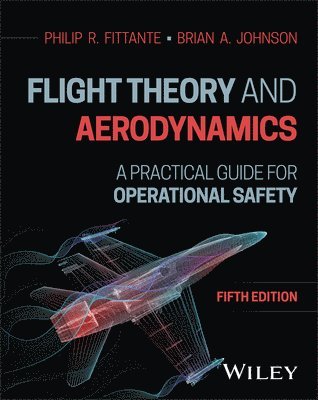Kommande

2549:-
Comprehensive introduction to aerodynamics applied to different types of modern aircraft, now updated with the latest FAA guidance Flight Theory & Aerodynamics provides an introduction to aerodynamics using practical application to modern aircraft with step-by-step calculations. This fifth edition streamlines current content, notably the chapters on aircraft stability, and incorporates updated FAA guidance and figures from the 2023 Pilot's Handbook of Aeronautical Knowledge as well as other FAA handbooks. A balanced application of introductory physics and meteorology within the first five chapters evolve into an introduction to propeller and jet aircraft propulsion and eventually move into a broad discussion on the application of physics to aircraft takeoff and landing performance. Once an understanding of the introductory material has been presented, the correlation of principles from earlier in the textbook and previous prerequisite course knowledge are applied to slow-flight, aircraft stability, and high-speed flight. A new chapter has been added to the latest edition to introduce Unmanned Aerial Vehicle (UAV) flight theory. The text features extensive instructor resources including detailed PowerPoint slides for each chapter, step-by-step guidance for end of chapter calculations, sample test bank questions for each chapter, and Application sections within each chapter that allow the instructor to challenge the student with additional real-world scenarios based on chapter content. Flight Theory & Aerodynamics includes information on: Elements of the flight environment, covering forces, mass, scalar and vector quantities, linear and rotational motion, friction, and power Atmosphere, altitude, and airspeed measurement, covering properties of the atmosphere, Bernoulli's equation, and pitot-static system advantages and disadvantages Jet aircraft performance, covering principles of propulsion, fuel flow, specific fuel consumption, and thrust-required curves Aircraft stability and control, covering oscillatory motion, weight and balance, and airplane reference axes Rotary-wing flight theory, airfoil selection, and helicopter control UAV flight theory, including UAV design considerations, the aerodynamics of UAV fuselage design, UAV powerplant design, and the future of UAV design and aerodynamics. End of chapter questions focused on scenario-based learning as applied to the performance analysis of a Diamond DA50 and corresponding chapter material. In addition to degree-oriented college programs, this latest edition of Flight Theory & Aerodynamics is also an essential resource for pilot training programs ranging from student pilots to flight instructors as well as practicing professionals flying a wide range of aircraft.
- Format: Inbunden
- ISBN: 9781394282296
- Språk: Engelska
- Antal sidor: 512
- Utgivningsdatum: 2025-09-17
- Förlag: John Wiley & Sons Inc

